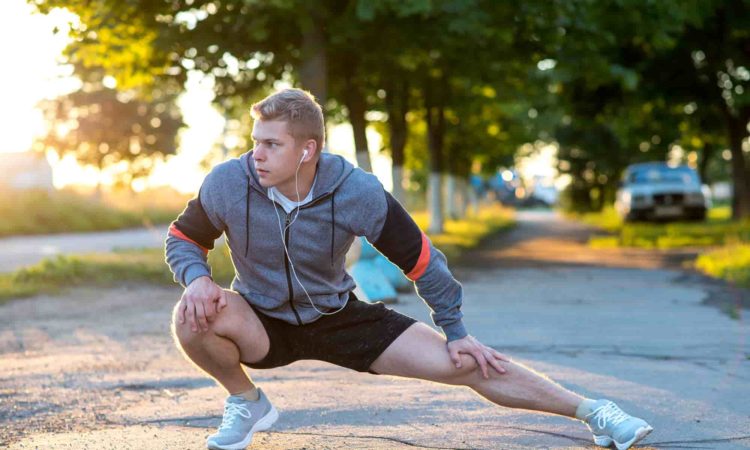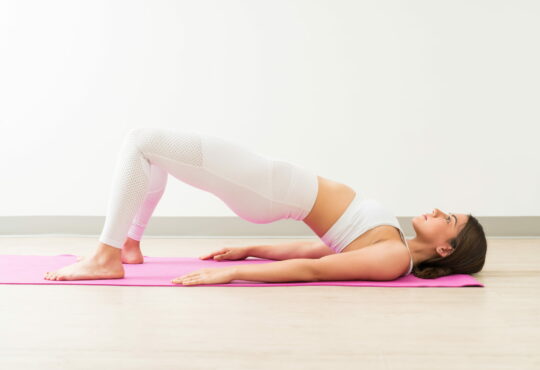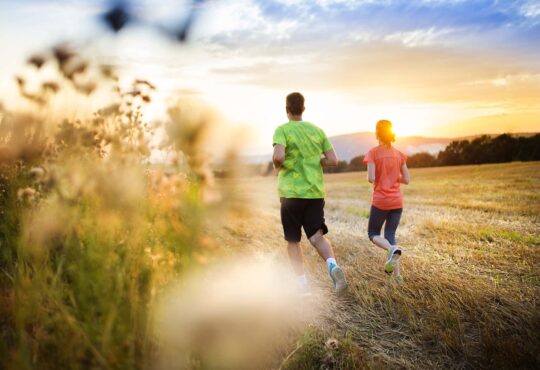
Decades ago, coaches and gym teachers simply assumed stretching was good for athletes. As part of their warmup before a workout, millions of young athletes sat on the ground and touched (or tried to touch) their toes – usually bouncing to a count.
Yoga is an ancient spiritual practice that includes physical movements designed to reduce physical pain, so that doesn’t distract you from the search for Enlightenment. That includes many asanas that force you to stretch to extend your range of motion, sometimes to an incredible degree.
Yoga is now highly popular, done by hundreds of millions around the world, and we assume it’s a healthy practice.
Flexibility is also intrinsic to other disciples, including dance and gymnastics. And normal people are training to become contortionists. If you search on YouTube, you can find many videos of dancers (including very young children) and contortionists putting their bodies into positions that will make your jaw drop.
Others, however, dispute the value of flexibility. I’ve heard athletes say they’re not flexible, and it didn’t hurt their performance.
Experts do warn that hypermobility – what you may call being double-jointed – can cause joint pain and injury. So can stretching yourself to the point beyond which normal joints go.
However, as with so many things related to exercise and fitness, the large majority of adults are far more at risk from inactivity and lack of flexibility than from injuring themselves by stretching too far or too much.
Benefits of Stretching
Without a regular practice of stretching, as we age we lose range of motion. That makes us more prone to falls and other injuries. Range of motion improves balance and stability.
Increasing – or, at least, preserving – range of motion is associated with increased longevity.
Stretching also reduces pain, improves your walking and your posture.
Of course, walking is a terrific exercise that benefits you in many ways.
Good posture improves the functioning of your internal organs. When you slump, you’re squishing them all together, affecting your digestion and your circulation.
Popular Misunderstandings
When you stretch, your muscles do not become “longer.” All muscles can do is contract and rest.
But stretching forces your connective tissues, such as the faschia, around the muscles and joints to re-arrange themselves to allow for increased range of motion.
Stretching is not a good way to warmup before exercising.
According to some experts, stretching before exercise limits your performance. Other research says the opposite.
The main issue is, though, you should warmup before stretching, or you risk injury.
Therefore, a good tip to incorporate stretching exercises into your routine is to perform them after your workout, so your muscles are plenty warm. You don’t have to find more time to stretch, just add the exercises to your regular program.
Stretching to the point of pain is not most effective. One study found participants gained more flexibility by stretching to a point 30%-40% before the point of pain (defined as 100%).
The Most Effective Way to Stretch
You can find many popular stretching methods and exercise: many different kinds of yoga, Pilates, gymnastics, dance, the Anderson Methods (either Bob or Tracy or both) and so on. Physical therapists Bob and Brad have many stretching videos on YouTube.
In the final analysis, the method that works best is the method you’ll continue to perform regularly for the rest of your life.
Stretching gets subdivided into other categories. There’s passive and active stretching. Static stretching. Dynamic stretching.
Although much more work remains to be done, science has studied this enough to have a good idea of what may be an optimal protocol.
The winner is static stretching – and not too much of it.
Static stretching is going to a certain point, then holding it. The research says 30 seconds is all you need. Extending the hold to one full minute didn’t provide any additional benefit.
What gives you more benefit is performing the stretch more often – at least five times per week. It should total around 5 minutes per week.
Which isn’t much.
You can perform 2-4 reps at a time of each stretch. Holding for just 30 seconds, that’s only a few minutes.
Follow or design a program that will stretch many parts of your body, not just your hamstrings.
Do perform the stretches mindfully – paying attention to your internal feelings. That may sound woo-woo, but research shows that itself increases the effectiveness of the stretch, and has other benefits.
See . . .
Study of Pain Tolerance of Yoga Practitioners vs Nonyogic Controls
Researchers took a large group of people who’d been practicing yoga – many different types of yoga and for different amounts of time – and compared them to people who didn’t practice yoga.
They found the yogis had significantly increased volume of gray matter in their brains, especially in the areas related to enteroception – your perception of your own body and how it feels.
In addition, the yogis had double the pain tolerance that nonyogis did.
While experiencing heat and cold pain, nonyogis reacted with mental strategies of resistance – they tried to ignore it, to distract their minds away from the pain.
Yogis, on the other hand, would react by using mental imagery. They’d just relax and accept the pain. They’d look on themselves as a third-person observer, and would focus on keeping their breaths calm.
There was a direct correlation between pain tolerance and increased brain volume to the number of years spent practicing yoga.
A Provocative Mouse Study
Dr. Helene Langevin, Director of the National Institute of Complementary Health and Medicine, carried out an incredible study on stretching mice.
They induced breast cancer in two groups of mice. The first group was stretched for ten minutes daily for four weeks. The control group was not stretched.
At the end of the study, the first group had a 52% reduction in tumor size!
They believe the stretching relaxed the mice, activating the parasympathetic side of their nervous systems. Given this rest, their immune systems were better able to fight the cancerous tumor.
This was a mouse study, but stretching improves our ability to reach states of deep relaxation as well, and that can only help make you healthier.
https://www.youtube.com/watch?v=yjT7bSdwUMg&t=358s
https://www.spinecorrectioncenter.com/is-there-a-danger-in-being-too-flexible/
https://www.youtube.com/watch?v=tkH2-_jMCSk&t=4126s
https://www.jadorevanessa.com/contortionist-training-vs-yoga-what-you-need-to-know/
https://www.nature.com/articles/s41598-018-26198-7
https://academic.oup.com/cercor/article/24/10/2732/307000?login=false
https://www.fitqueenirene.com/blog/2019/3/16/why-i-stopped-practicing-contortion







